A shield for dwarf galaxies? Hubble Space Telescope new discovery
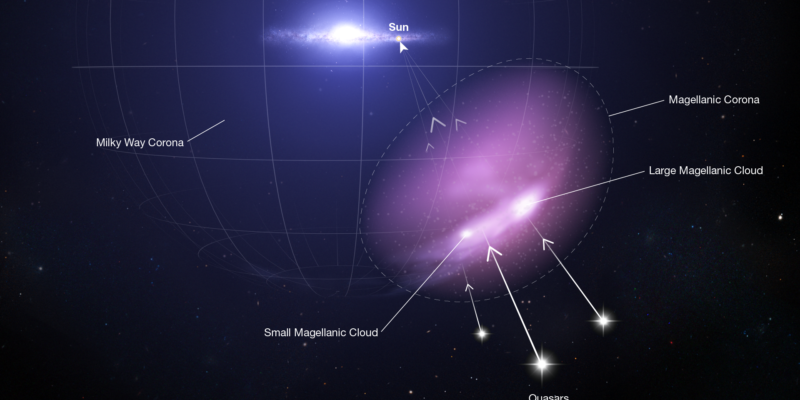
Overview

Researchers have used spectroscopic observations of ultraviolet light from quasars to detect and map out the Magellanic Corona, a diffuse halo of hot, supercharged gas surrounding the Small and Large Magellanic Clouds. Shown here in purple, the corona stretches more than 100,000 light-years from the main mass of stars, gas, and dust that make up the Magellanic Clouds, intermingling with the hotter and more extensive corona that surrounds the Milky Way. The Magellanic Clouds, dwarf galaxies roughly 160,000 light-years from Earth, are the largest of the Milky Way’s satellites and are thought to be on their first in-falling passage around the Milky Way. This journey has begun to unravel what were once barred spirals with multiple arms into more irregular-shaped galaxies with long tails of debris. The corona is thought to act as a buffer protecting the dwarf galaxies’ vital star-forming gas from the gravitational pull of the much larger Milky Way. The detection of the Magellanic Corona was made by analyzing patterns in ultraviolet light from 28 distant background quasars. As the quasar light passes through the corona, certain wavelengths (colors) of ultraviolet light are absorbed. The quasar spectra become imprinted with the distinct signatures of carbon, oxygen, and silicon ions that make up the corona gas. Because each quasar probes a different part of the corona, the research team was also able to show that the amount of gas decreases with distance from the center of the Large Magellanic Cloud. This study used archival observations of quasars from Hubble’s Cosmic Origins Spectrograph (COS) and the Far Ultraviolet Spectroscopic Explorer (FUSE). Quasars have also been used to probe the Magellanic Stream, outflows from the Milky Way , and the halo surrounding the Andromeda Galaxy. Illustration Credits: STScI, Leah Hustak
For billions of years, the Milky Way’s largest satellite galaxies – the Large and Small Magellanic Clouds – have followed a perilous journey. Orbiting one another as they are pulled in toward our home galaxy, they have begun to unravel, leaving behind trails of gaseous debris. And yet – to the puzzlement of astronomers – these dwarf galaxies remain intact, with ongoing vigorous star formation.
“A lot of people were struggling to explain how these streams of material could be there,” said Dhanesh Krishnarao, assistant professor at Colorado College. “If this gas was removed from these galaxies, how are they still forming stars?”
With the help of data from NASA’s Hubble Space Telescope and a retired satellite called the Far Ultraviolet Spectroscopic Explorer (FUSE), a team of astronomers led by Krishnarao has finally found the answer: the Magellanic system is surrounded by a corona, a protective shield of hot supercharged gas. This cocoons the two galaxies, preventing their gas supplies from being siphoned off by the Milky Way, and therefore allowing them to continue forming new stars.[1]
Large Magellanic Cloud

Large Magellanic Cloud
The Large Magellanic Cloud (LMC), or Nubecula Major is a satellite galaxy of the Milky Way. At a distance of around 50 kiloparsecs (≈160,000 light-years), the LMC is the second- or third-closest galaxy to the Milky Way, after the Sagittarius Dwarf Spheroidal (~16 kpc) and the possible dwarf irregular galaxy known as the Canis Major Overdensity.
Based on the D25 isophote at the B-band (445 nm wavelength of light), the Large Magellanic Cloud is approximately 9.86 kiloparsecs (32,200 light-years) across. It is roughly a hundredth as massive as the Milky Way and is the fourth-largest galaxy in the Local Group, after the Andromeda Galaxy (M31), the Milky Way and the Triangulum Galaxy (M33).
The LMC is classified as a Magellanic spiral. It contains a stellar bar that is geometrically off center, suggesting that it was a barred dwarf spiral galaxy before its spiral arms were disrupted, likely by tidal interactions from the Small Magellanic Cloud (SMC) and the Milky Way’s gravity.
Small Magellanic Cloud
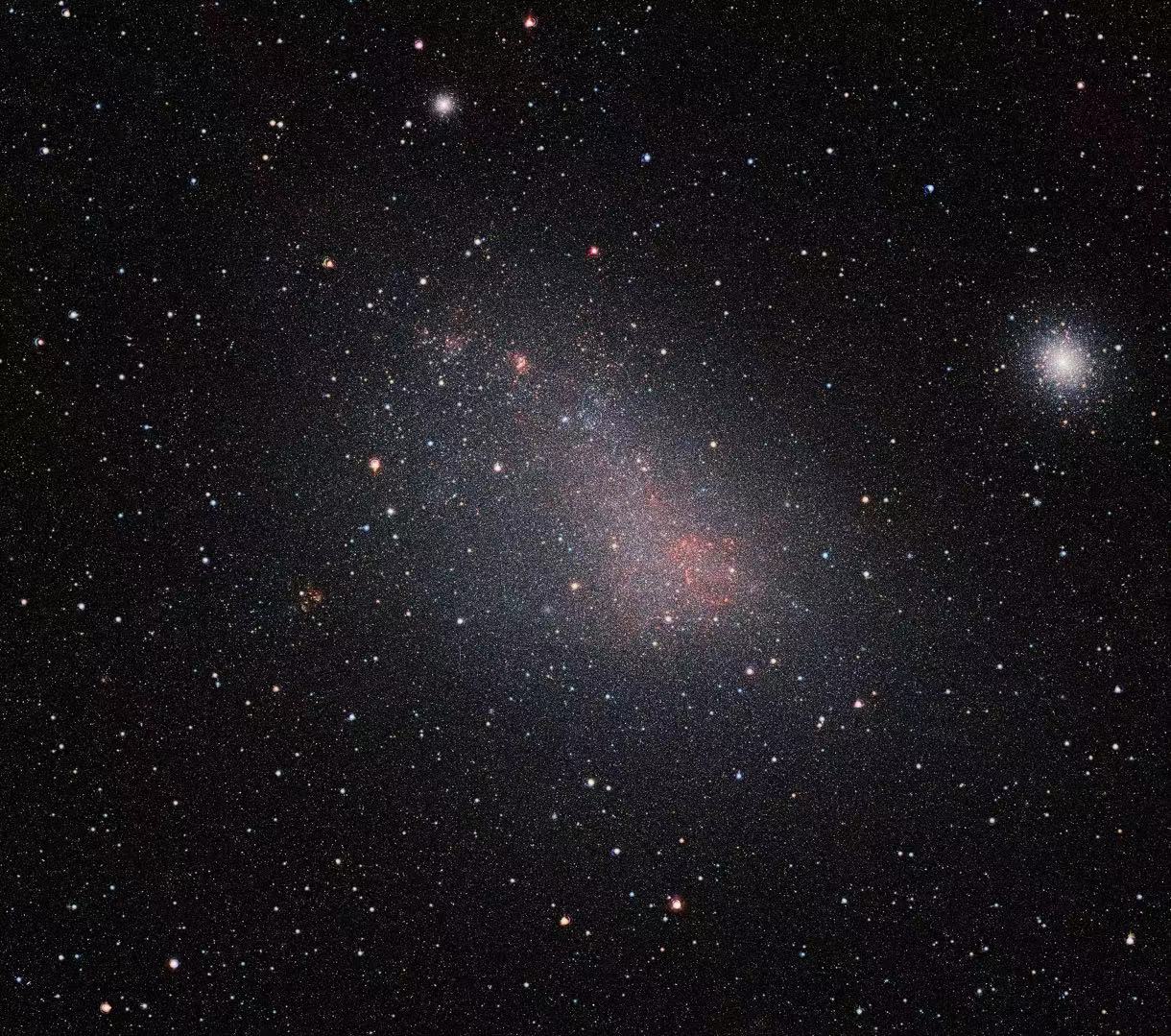
Small Magellanic Cloud
The Small Magellanic Cloud (SMC), or Nubecula Minor, is a dwarf galaxy near the Milky Way.
Classified as a dwarf irregular galaxy, the SMC has a D25 isophotal diameter of about 5.78 kiloparsecs (18,900 light-years), and contains several hundred million stars. It has a total mass of approximately 7 billion solar masses.
At a distance of about 200,000 light-years, the SMC is among the nearest intergalactic neighbors of the Milky Way and is one of the most distant objects visible to the naked eye.
Stellar corona
The Sun’s corona lies above the chromosphere and extends millions of kilometres into outer space.
It is most easily seen during a total solar eclipse, but it is also observable with a coronagraph. Spectroscopic measurements indicate strong ionization in the corona and a plasma temperature in excess of 1000000 kelvins, much hotter than the surface of the Sun, known as the photosphere.
Hubble Space Telescope

Hubble Space Telescope
The Hubble Space Telescope (often referred to as HST or Hubble) is a space telescope that was launched into low Earth orbit in 1990 and remains in operation.
It was not the first space telescope, but it is one of the largest and most versatile, renowned both as a vital research tool and as a public relations boon for astronomy.
The Hubble telescope is named after astronomer Edwin Hubble and is one of NASA’s Great Observatories. The Space Telescope Science Institute (STScI) selects Hubble’s targets and processes the resulting data, while the Goddard Space Flight Center (GSFC) controls the spacecraft.
Detail
This discovery, which was just published in Nature[2], addresses a novel aspect of galaxy evolution. “Galaxies envelope themselves in gaseous cocoons, which act as defensive shields against other galaxies,” said co-investigator Andrew Fox of the Space Telescope Science Institute in Baltimore, Maryland.
Astronomers predicted the corona’s existence several years ago. “We discovered that if we included a corona in the simulations of the Magellanic Clouds falling onto the Milky Way, we could explain the mass of extracted gas for the first time,” explained Elena D’Onghia, a co-investigator at the University of Wisconsin–Madison. “We knew that the Large Magellanic Cloud should be massive enough to have a corona.”
But although the corona stretches more than 100,000 light-years from the Magellanic clouds and covers a huge portion of the southern sky, it is effectively invisible. Mapping it out required scouring through 30 years of archived data for suitable measurements.
Researchers think that a galaxy’s corona is a remnant of the primordial cloud of gas that collapsed to form the galaxy billions of years ago. Although coronas have been seen around more distant dwarf galaxies, astronomers had never before been able to probe one in as much detail as this.
There’re lots of predictions from computer simulations about what they should look like, how they should interact over billions of years, but observationally we can’t really test most of them because dwarf galaxies are typically just too hard to detect,” said Krishnarao. Because they are right on our doorstep, the Magellanic Clouds provide an ideal opportunity to study how dwarf galaxies interact and evolve.
In search of direct evidence of the Magellanic Corona, the team combed through the Hubble and FUSE archives for ultraviolet observations of quasars located billions of light-years behind it. Quasars are the extremely bright cores of galaxies harboring massive active black holes. The team reasoned that although the corona would be too dim to see on its own, it should be visible as a sort of fog obscuring and absorbing distinct patterns of bright light from quasars in the background. Hubble observations of quasars were used in the past to map the corona surrounding the Andromeda galaxy.
By analyzing patterns in ultraviolet light from 28 quasars, the team was able to detect and characterize the material surrounding the Large Magellanic Cloud and confirm that the corona exists. As predicted, the quasar spectra are imprinted with the distinct signatures of carbon, oxygen, and silicon that make up the halo of hot plasma that surrounds the galaxy.
References:
[1]Hubble Detects Protective Shield Defending a Pair of Dwarf Galaxies | NASA
[2]Nature


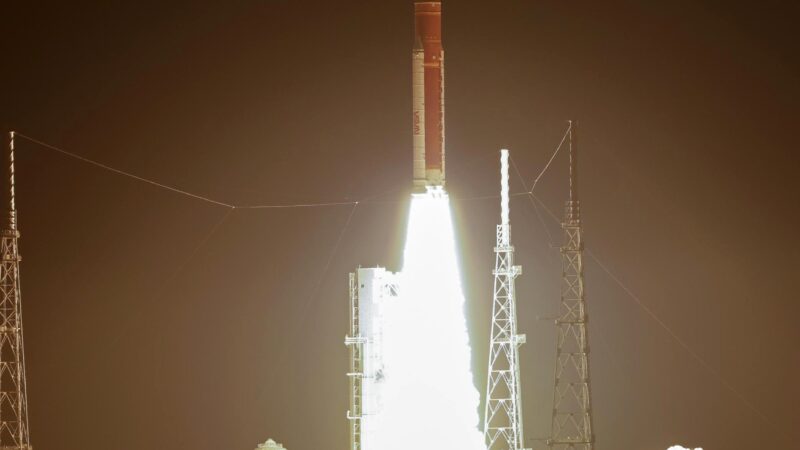

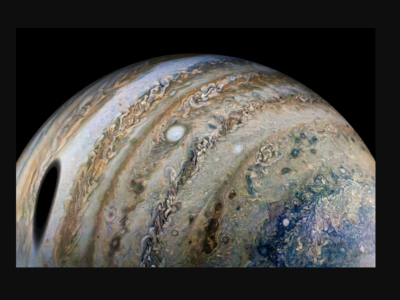
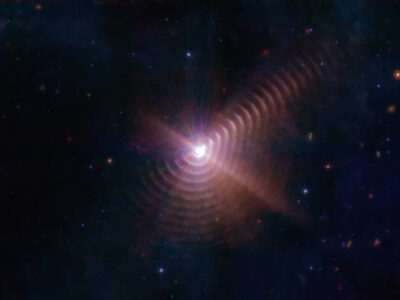
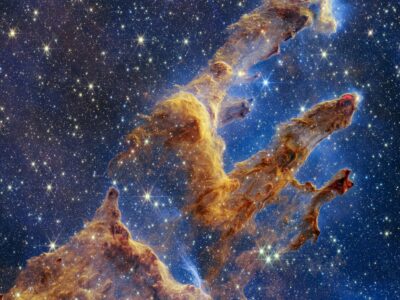
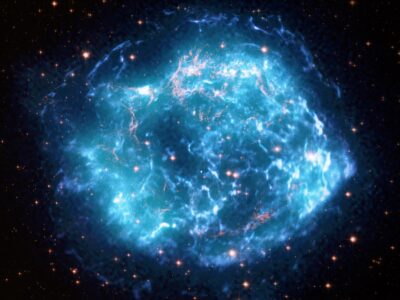



anyway beautiful